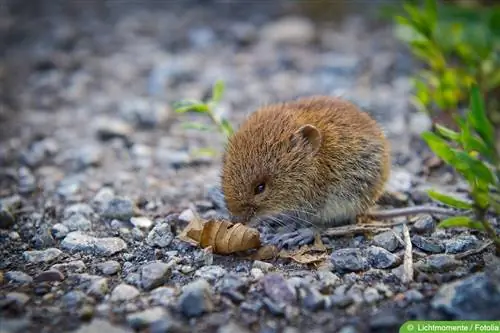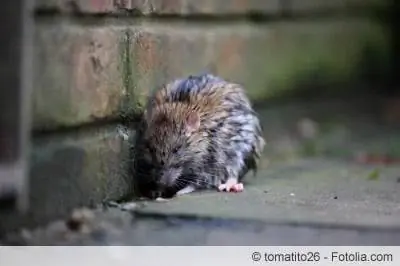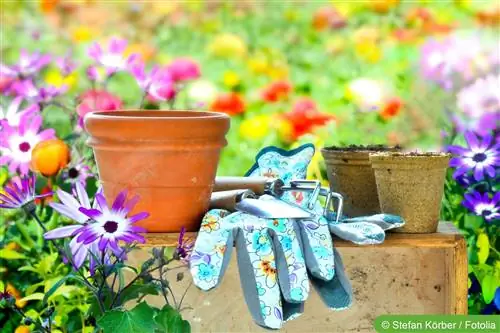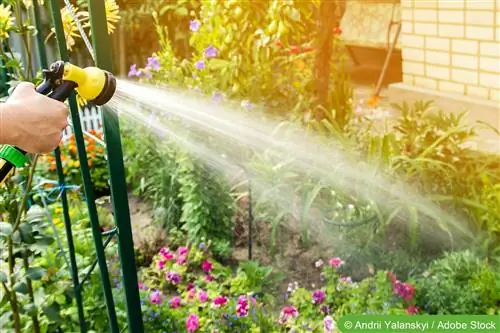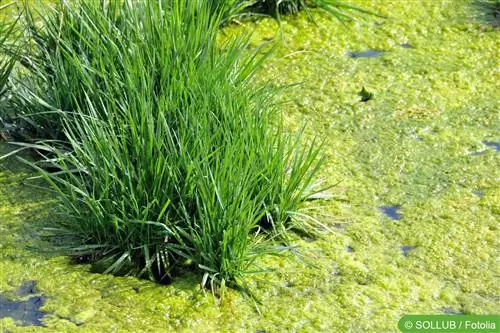- Author admin [email protected].
- Public 2023-12-17 03:39.
- Last modified 2025-01-24 12:45.
Voles can destroy roots and therefore entire plants. Preventing them biologically and preventing their spread is therefore crucial. Here's how it works.
What are voles?
The scientific name of these mammals is Arvicolinae. This subfamily includes more than 150 species. Due to this enormous diversity, there are significant differences in size and weight. When people talk directly about voles, these species are usually mentioned:
- earth mouse
- Field Mouse
- Shrew
Note:
Although the shrew is not scientifically considered a vole, the tiny animals are often mistaken for one. Visually they can be recognized not only by their small size, but also by their very pointed nose.
Identifying voles
The animals themselves are rarely directly visible. However, they leave traces that are comparatively easy to recognize. These include:
- Eating marks on tubers, roots and other plant parts
- possibly unpleasant smell of feces and urine
- small holes in the ground on beds or the lawn
- unexplained incoming plants
The holes in the ground are often noticeable, especially when mowing the lawn and pulling weeds, because voles are rarely found in houses and other buildings. In contrast to the traces of moles, there are no piles of dirt at the exits and entrances.
Prevention
As always: prevention is better than cure. Therefore, appropriate measures should be taken when creating the garden.
Predators
A natural design of the garden allows the predators of the voles to also settle and create a natural balance. It is enough to make the grass higher in a small area, provide perches and hiding places such as piles of stones.
The predators include:
- Foxes
- Cats
- Marten and weasel
- Birds of prey, such as the common buzzard
Plants

Some plants deter voles. For example:
- Imperial Crown
- garlic
- Daffodils
- sweet clover
- Grape Hyacinth
- Spurweed
- Onions
Note:
Plant the plants as evenly distributed as possible in the garden. Otherwise, the animals will simply learn to avoid them.
Lawn edge stones and mouse wire
Vole burrows can be 50 to 80 square meters in size. Gardens with delimited and divided areas are therefore less interesting for them. A certain level of protection can be created by dividing beds and using mouse wire around roots. Although this method does not offer a guarantee against the animals, it does reduce the risk of an infestation.
Raised beds

Raised beds are another way to prevent voles and other pests. If the floor is sealed, the animals are much less likely to penetrate. There are also other advantages with raised beds. Below:
- faster and higher returns
- Protection against snails
- Prevention against rats
Vole control
If there are already mice in the garden, the preventive measures mentioned can still be useful. But more is needed to combat it directly.
Buttermilk
Fermented buttermilk has a very intense smell. This is supposed to keep the burrowing mice away. However, this has not been proven. Although the home remedy is organic and simple, cheap and can be made within one to three days, its effectiveness is questionable. In addition, the smell can be annoying overall. Especially when there are several holes or larger areas, an enormous amount has to be used. This can, among other things, attract insects and generally make spending time in the garden unpleasant.
Feces and urine
Dogs and cats are among the natural enemies of voles. The smell alone can have a deterrent effect and help combat them. Feces and urine are the most effective. You can fill these products directly into the holes of the voles in the form of used cat litter, for example. However, some mice get used to it over time.
Fur
In order to simulate the presence of dogs and cats, fur can be used instead of feces and urine. After brushing, the combed out hair is best formed into small matted balls and placed in the exits of the mouse holes.
Tip:
Use animal home remedies only if there is no allergy. Otherwise, the allergens it contains may make it difficult to stay in the garden.
Sounds and movements
Frequent work and movement in the garden, such as mowing the lawn, playing children or pets also contribute to vole control. This makes the area less attractive to the animals, so frequent use of your own green space can have both a preventive and deterrent effect.
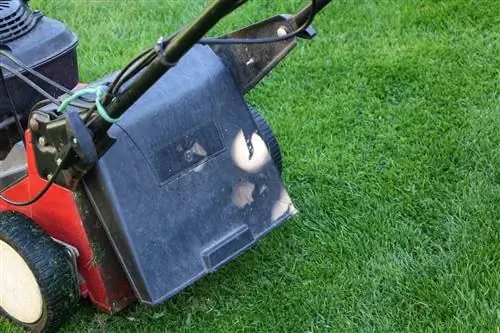
Alternatively, you can also find special devices in stores that are supposed to have a repelling effect using particularly high frequencies. However, the animals often get used to it and the hoped-for effect does not materialize. Other useful animals and pets can feel disturbed by the sound, as can children and young people. Please exercise caution when using it.
Light
Voles are also active in the garden at dusk and at night. If they are disturbed by motion detectors and bright light, they will quickly look for a new living space. Make sure that the sensors are aligned so that movements at the entrances or holes in the mouse passages trigger the light to switch on. A possible disadvantage of this simple remedy is that it also drives away other nocturnal animals. Since these are owls, foxes, cats and martens, the voles' natural predators are also driven away.
Seal holes
It is often recommended to seal the holes in the passages. For example, stones can be filled in or slabs can be placed on top. The potential disadvantage of this is that the animals create new exits. The earth then only has more holes. In combination with other methods and means, covering can still help to make your own garden an unsuitable habitat for voles.
Water
Submerging the animals' burrows under water can be very effective. It is also organic and therefore environmentally friendly. This measure often has to be repeated several times to have an effect.
Falling
Live traps but also deadly traps are very efficient methods of vole control. Live traps are gentler, but the subsequent release of the animals requires more effort. Suitable baits include:
- Carrots
- Celery
- Jerusalem Jerusalem artichoke
Poison bait
Poison bait and poison in general can work quickly, but pose a danger to children, animals and the environment. This means a risk for useful animals as well as pets and children. If safe use cannot be guaranteed, you should refrain from using it.
Distraction
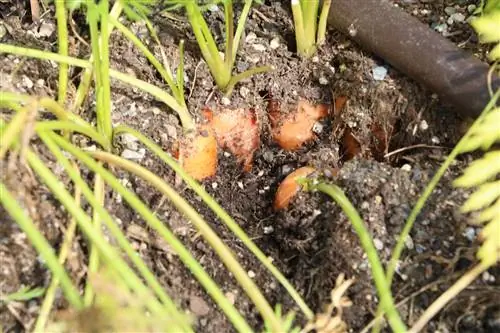
Instead of fighting the voles, protective measures can also be taken and distractions can be created. It is a good idea to plant plants preferred by animals in the natural section of the garden. These are the species that can also be used as bait. Root vegetables and beets, such as carrots, celery and Jerusalem artichokes, are easy to care for and ideal.

